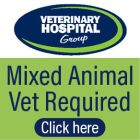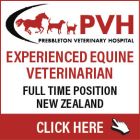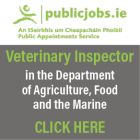Focus - December 2019
Water: the good, the bad, and the ugly
JF Robertson, honorary research fellow, Aberdeen University, outlines why water is one of the most important inputs on dairy farms – a prime ingredient for positive health and productivity
Abstract
Water is the most vital, least expensive, and most seriously underrated input on dairy units after fresh air. Milk is approximately 87% water; faeces and urine are 92% moisture, and breathing produces moisture. In a 200-cow unit with average 10,000L per annum (pa), cows will have a water turnover approaching 7,500 tonnes per year, at a modest cost of £10-11,000 if direct from the mains, less if taken from a borehole.
While water is a prime ingredient for positive health and productivity, casual observation of facilities and animal behaviour around UK dairy units suggests that water is not always a highly valued part of the business. Empty drinking bowls, cows queuing to drink from a trough, drinking off the floor, and seldom a mention of water quality are all commonalities on dairy farms. Does it matter? A research review on water for the Agriculture and Horticulture Development Board (AHDB [2017a]) describes a range of limitations to health and productivity directly related to access to water and water quality, and direct impacts on financial health. Cryptosporidium parvum remains infective for six months in water at 5-15oC, Salmonella species in water are infective after 50 days, and Escherichia coli survival is variable but can be up to a year. Most of the UK cattle sector, for example, has no information on water-flow rates or water quality at farm level, or where all the dirty water ends up.
INTRODUCTION
Water is vital, low-cost, and ever present in the cattle industry. Much of the scientific understanding of cattle requirements for water was established in the 1960s-1980s, often as an adjunct to the detailed studies of animal nutrition. The metabolic demands placed on cattle of all ages will have changed and increased in the past 30-40 years, but the basic physiological requirements that were understood in the original studies will be unchanged. There are many easily available practical summaries of water requirements for cattle that are useful for practitioners, with publications containing extensive practical guidance coming from the US (eg. Olkowski 2009). The Department for Environment, Food and Rural Affairs (Defra [2012]) has published a substantial review. Basic guidance material for livestock drinking water is widely available in the UK via quality assurance standards (eg. Red Tractor Assurance for Farms; Dairy Scheme, 2018: Beef & Lamb Scheme, 2018) but deal in terms of ‘sufficient’, ‘acceptable’, and ‘clean’ that are all subjective measures.
There is remarkably little research available about either how much water cattle actually drink under commercial conditions, or what happens when water intake is restricted or outside general quality parameters. This review will look at some of the available information.
The ugly side of water on UK cattle units, and especially dairy units, is so common that it seldom enters any debate on cattle health and unit profitability. Moisture is a critical component in the survival of numerous cattle pathogens within the environment, yet large quantities of uncontrolled water permeate cattle farms and contribute to significant management issues. A typical 200-cow dairy unit will have at least 5,000m2 of buildings and hard standing, which easily converts clean rainwater into 5,000-10,000 tonnes of dirty water pa dependant on climate and general awareness of the issue. It contributes to poor hygiene, pathogen survival, increased costs and diffuse pollution.
The subject of water is a choice area for the practitioner to help their clients with animal and financial health. The value of water, and the cost of getting it wrong, and guidance towards practical solutions are yet another area where the practitioner can support their clients, if they choose to.
WATER FLOW RATES AND ACCESS
Guidance information on how much water is required for different ages of cattle and for cattle under different physiological conditions, has been available for years (National Research Council 2000, Beede 2006, Olkowski 2009). Typical ranges of water intakes are available. Table 1 shows the estimated water intakes derived from three different models of intake, and describes the influence of milk yield, dry matter intake and percentage dry matter (DM) of the diet on water intakes (Beede 2006). Table 2 shows estimated water requirements influenced by milk yield, DM and ambient temperatures (AHDB 2012), and Table 3 shows estimate water requirements for beef cattle at different ambient temperatures (National Research Council 2000). Intakes show expected variations in excess of 10% driven by just one factor, which equates to a change of 1.5 to 2.0m3 per day in a 200-cow herd. Ballpark figures for water requirements are 4L/kg dry matter intake (DMI) for cattle in general, and 6L/kg DMI for cows in the last four months of lactation or pregnancy.
Flow rates at drinkers should have a recommended minimum flow rate of 10L/min, and more where demand is high, for example, in water troughs on the exit from parlours. Cows can drink up to 20L/min. Ten per cent of dry cows should be able to drink simultaneously; dry cows needs to be able to drink 10L in one minute and with the average abdomen width of dry Holstein Friesian cows 75 to 82cm that sets a minimum trough size of 2.5m for a group size of 30 (Hulsen 2012). There is a general recommendation that cattle should have access to at least two sources of water to prevent restriction of intake.
Access to water is a combination of available trough length and location. Based on guidance that 10% of stock should be able to drink at one time, and cattle of 350 to 700kg should be provided with 450-700mm of water trough space (RSCPA 2018), the minimum effective drinking perimeter would be 4.5m for a group of 100 cows. More technical design information is available from CIGR (2014), with water levels at about 0.85m above the floor, and 0.07-0.08m below the top of the trough to minimise fouling and excessive spillage. To reduce soiling of water troughs, a guard rail set at 200mm distance from the top of the trough or a step up to the trough of 200mm height is beneficial. Troughs should always be fitted with a means of stopping the water supply and also of emptying the trough completely.
Access to water is not a given, even if there is a drinker in the pen and water in the drinker. The location of the drinker and the dynamics of any one group of cattle does lead to lower order cattle getting less access to water than required, even before poor quality reduces daily intake. There appears to be little published data on what is actually happening on UK cattle units. Some parts of the dairy sector have made excellent progress in improving access to clean water in cubicle housing and on exit from parlours, and might be encouraged to continue that to all cattle.
It is possible that the overall water quantities required on individual farms only come into question when something goes wrong. For example, changes in milk yield, growth rates or fertility will frequently lead producers and practitioners to question nutrition or health, but seldom water availability or quality. In calf management, there is active disagreement on the requirement for fresh water in front of calves, despite a legal requirement. The need and value of getting clean water in front of cattle would appear to be logical and beneficial, but the facts may need to be reiterated and resold to the producer.
CALF WATER INTAKES
Water is an essential ingredient for rumen development, and is an absolute requirement for the fermentation of the early calf ingestion of solid feeds. The requirements are simple:
• Clean and fresh water available after day 1-2; and
• Quantity – 1-1.5L/day at start, rising to 4-5L/kg DMI per day.
The amount of research data available is small, although there is a greater amount of guidance material available (eg. Earlywine 2015). Calves, pre-weaning, drank significantly more water (+47%) when offered warm (16oC–18oC) rather than cold (6oC–8oC), but there was no observed impact on production or feed conversion ratio (FCR [Huuskonen et el, 2011]). Water intakes were low and not significantly different on three different feeding regimes involving 6L/day and 12L/day milk replacer (de Passillé et al, 2011), although water intake was positively correlated with starter intake (P=0.03), but not with hay intake. Around weaning, days 74-80, water intake was positively correlated with starter (P<0.001) and hay intake (P=0.02), and negatively correlated with milk intake (P<0.001). Water intakes reached 12L/day by week 14 of the experiment. Data relating to water intakes to starter feed intake suggests a minimum of 4.5L of water per 1kg of starter intake, equivalent to 2.5l/kg of DMI (Bach 2018). There was no significant difference in intakes after weaning between water presented in an open bucket or a bucket with teat (Hepola et al, 2008).
The irony is that, in spite of the simple requirements, the routine provision of competent water in front of calves is not a foregone conclusion. Water is too often not clean, not fresh, or even absent. The guidance is for water to be available a few metres away from automatic milk feeders, at a height at which the calves do not have to drop the neck too far to drink. If water and feed are both kept clean, helped by a degree of separation, calves eat more and have increasing growth rates. Water should be placed in front of penned calves at least one hour after the milk feed to prevent ruminal drinking.
WATER TEMPERATURE
Water temperature does have an impact on intakes and performance of cattle, with a recommended target temperature of between 10-20oC. Anderson (1985) describes intakes of feed, water, salt and milk yield in cows given water at 3, 10, 17 and 24°C, with milk yield significantly lower when on water at 3oC than on the other temperatures. This result is mirrored elsewhere, although Lofgreen (1975) noted that there is a transient cooling effect on cows fed colder water that would be useful during hot weather.
WATER QUALITY
There are a number of national guidelines for livestock water quality (Defra 2012, AHDB 2017a), which for the UK are broadly based and reflect equivalence with human standards (parallels of) or field data when water has been implicated in acute losses in livestock. The AHDB water report lists water standards for pigs from Holland, Canada and USA (AHDB 2017a). The value of these guidelines is hard to quantify as relevant water samples are seldom taken on UK cattle units apart from annual tests in the parlour. However, analysis of water samples from boreholes on livestock units (n=140) showed that whilst 80% were below action levels on each of 12 measured variables, the remainder were not (AHDB 2017a). A total of 15% of samples were above 250mg/ml for sulphates, and 6% in excess of the 15mg/ml recommended action level for nitrates. It is less clear that any of this information can be used as an indicator of water quality that is detrimental to cattle performance or health, although field-based questioning does reveal that cattle show clear preferences for water from different sources.
WATER MONITORING
There is a requirement for all off-mains water supplies through the parlour to be tested, usually annually. Many farms will have water test results because houses on the farm have off-mains supplies. This is a good start as the information will indicate whether any of the basic salts are at concentrations that require intervention. However, the quality of water at source is not necessarily the same as supplied to the cattle, and appraisal of water troughs around a farm is useful. Testing can include physical appearance such as odour, cloudiness or turbidity, or gross contamination, eg. sand or silt.
A simple way to start is to look at the water and to smell it. If it looks rank and smells bad, there is little point sending a sample for analysis; it needs cleaning up. When submitting water samples for analysis, ask for an assessment of:
- Total soluble salts or total dissolved solids, which measure the salinity or amount of soluble salts in water, including calcium, magnesium, sodium, chloride and sulphate salts;
- Hardness – calcium, magnesium, iron, aluminium, zinc and manganese all affect water hardness;
- Nitrates;
- Iron; and
- Microbial contaminants such as coliforms E. coli and Salmonella.
Sampling is an issue on farm, because the number and frequency of samples is too quickly enumerated as a cost, with no regard to potential benefit. The fallacy of this approach is most keenly seen in water sampling for two reasons. The first is that the process of sampling can easily introduce contamination to a sample, and if only one or two samples have been taken, a contaminated sample may stimulate a costly reaction at farm level. The second reason for multiple samples is to provide a picture of water quality around the farm, because the main causes of contamination are likely to be local, within and between buildings. Multiple samples will support a more balanced response to the decision making.
Guidance on how to correctly sample water is widely available (eg. AHDB 2017b). Do not support the submission of any water samples in second-hand containers of any kind unless they are aseptic.
To have a borehole tested for microbiological and chemical contaminants, as required by the quality assurance schemes, and to have three or four samples around the farm taken for microbiological testing, will cost in the region of £200 for analysis. There is plenty of expertise available; all UK broiler farms will have borehole water tested twice per year, all Red Tractor-assured farms with off mains supplies are tested annually. Alberta Agriculture and Food (2007) have provided a useful water analysis interpretation for livestock (note that 1mg/L = 1 part per million (ppm).
Further analysis of the NMR borehole water samples referred to above (AHDB, 2017a) demonstrates the value of the water sampling. While approximately 80% of water samples were above guidance levels for the factors measured, 20% were not and represent an opportunity for improvement at animal level. The greater detail is shown in Table 4, which shows the number of samples that fall below guidance levels, and the extent to which the frequency of failure changes as the guidance levels change. For example, the guidance limit for sodium is <1,000ppm in the UK, and 150ppm in the USA, and with cautionary concentrations of 50ppm set for young calves. The number of the NMR borehole dataset samples (n=140) that fails these three guidance levels are 1, 18 and 37 respectively.
Table 4 also includes data from Beede (2006) where the laboratory analysis of water for dairy cattle units (n≤42) from the mid-south and High Plains area of the US is presented. The caution, or limit levels of individual components, is slightly different from those presented in the UK, and Table 4 also presents the UK data (AHDB 2017a) according to the US standards to show the impact of different cautionary levels. There is also in Table 4 the introduction of a cautionary level for SO4 + Cl- which is mentioned in the American literature as 1,000ppm, but it doesn’t make an impact on the frequency of failed levels on the UK data.
Electrical conductivity of water is a useful rapid assessment method as it provides an indication of the concentration of dissolved salts and inorganic minerals in water. High values can be used to prompt for further water sample analysis. Note that the UK limit level of 2,500 μS/cm is an arbitrary value, and that the US guidance of 1,500 μS/cm may be a more useful guide according to the data presented here.
Apart from magnesium, copper and iron, there is a degree of symmetry between the two data sets with the percentage of samples falling outside guidance limits. Magnesium and copper levels in the UK water data do not reach action levels, whilst 6% of UK samples are above guidance for iron concentrations, compared with 16% for the US data. Elevated iron levels can act as an antagonist to copper uptake in cattle, and could be a problem to late pregnancy cows where copper is preferentially directed to the foetus. High iron levels have been associated in a farm case study with a reduction in milk yield (Mann et al, 2013).
Sulphate concentrations were the most common reason for water samples to fail guidance levels in the UK dataset. Sulphate is commonly occurring, and levels of 1,000 to 2,000ppm can result in diarrhoea in cattle, and at lower levels for calves (Wright and Patterson 2005, Wright 2007).
Water quality testing on 47 dairy farms in Northern Spain, with two samples from the lactating cows’ pens, demonstrated general good water quality (Bach et al, 2008). Calcium, hardness and pH tended (P=0.08) to be negatively correlated with number of days open and the proportion of cows culled for fertility problems. Water calcium was positively correlated (P<0.05) with milk urea concentration and tended (P=0.1) to be negatively correlated with milk fat content. Chlorine concentration was negatively correlated with milk protein content, with the suggestion made that there may be an inhibitory effect on rumen bacterial via an antimicrobial effect
WATER AND PATHOGENS
Water is seldom discussed as a significant variable in the prevalence or severity of a pathogen, despite the clear impact of aerobic/anaerobic/humidity conditions on specific pathogen survival. The main scientific focus has been on water as a link in zoonotic infections such as E.coli, Cryptosporidium species, or Campylobacter. However, from an animal health aspect, water can be a neutral or protective environment for a range of pathogens, which leads to the conclusion that observed practices on production units such as failure to dry a pen or building after ‘cleaning’, or incompetent cleaning of feeders and drinkers, will seldom provide a ‘clean= uncontaminated’ environment. Water pooling on the floor around units, sometimes a source of drinking water for cattle under harsh conditions, will obviously be contaminated with a heavy bacteriological load. Mycoplasma bovis was commonly isolated from cooling ponds and from dirt lots with recently calved cows on farms that had a history of M. bovis and positive bulk tank milk cultures (Bray et al, 2001).
Some pathogens, such as E.coli and Campylobacter, inhabit the biofilm that coats the inside of drinker lines, while others can proliferate in the same environment (Table 5). Enteric viruses (eg. adenoviruses, rotaviruses, noroviruses) and parasitic protozoa (eg. Cryptosporidium parvum) can attach to pre-existing biofilm and provide a persistent source of infection. The evidence presented in the AHDB report shows that while water delivered to a pig unit may be clean, subsequent contamination in storage vessels and/or distribution pipework may provide a pathogenic water supply at pen level.
There is a lack of information on what is actually delivered at the point of drinking for cattle. Other questions remain. Heavy organic contamination and faecal material are not uncommon in farm feed and water troughs, but there is no information on the relative importance of contamination that reduces intake and, therefore, performance compared with contamination that has a direct impact on physiological processes.
WATER SOURCES
The key findings of the latest Defra report on water supplies on UK farms (Defra 2016) are as follows:
- Mains supply was the most common source of water on farms (86% in 2014-15), particularly for those in the east of the country and those outside less favoured areas (LFA).
- 29% of farms abstracted water from rivers/streams/springs for immediate use. Usage was more likely on LFA grazing livestock farms, farms in the South West and farms in severely disadvantaged areas (SDA).
- 25% of farms used water from boreholes. Usage was more likely on specialist dairy, pig and poultry farms, very large farms and farms in the west of the country.
- In 2014-15 farms sourced, on average, two thirds of their water from the mains supply, 18% from boreholes and 12% abstracted from rivers/streams/springs for immediate use.
- Cereal farms, spare and part-time (very small) farms and farms in the east of the country tended to source a greater proportion of their water from the mains supply than other farms.
- Dairy farms, very large farms and farms in the South West tended to source a greater proportion of their water from boreholes than other farms.
- LFA grazing livestock farms and farms in the north of England tended to abstract a greater proportion of the water that they used than other farms.
The last two points change the overall picture for livestock farms. Approximately 50% of dairy farms use borehole for all or part of total water supplies. The use of abstracted water from rivers or streams or springs for immediate use was significantly related to farm type, region, LFA status and farm size, and was more likely on LFA grazing livestock farms (71%). Borehole and other abstracted water sources need to be monitored, and the practitioner is well placed to provide support for good practice and improvement where needed, if they choose to take the responsibility.
Rainwater storage was practiced on 7% of farms (Defra 2016). This practice is significantly under-utilised, probably because the cost of implementation is not seen as an investment. Project work reported from a Cumbria Farmer Network NW Livestock Programme demonstration event (2012) demonstrates that private water supplies can make a positive contribution to farm finances (cited in AHDB 2017a). Table 6 summarises the relative costs and capacities of different water supply systems for livestock. The range of costs are wide but the annual running costs need to be set against typical mains water costs of £1.25/m3 in the UK. The costs and capacities are from project data; higher capacity boreholes are not unusual, subject to abstraction licences.
This paper does not attempt to cover guidance on how to clean water supplies around farms. There is broad guidance in the AHDB (2017a) document, and many commercial companies who work in water hygiene also provide useful information. The main target is to find professional support for farmer clients from people who know what they are talking about. This is sometimes easier said than done.
DIRTY WATER – DIFFUSE POLLUTION
Dirty water is a by-product of most production processes and is normal. The quantities of dirty water produced by the UK dairy sector are not normal. Normal would include management practices that a layperson might expect on the basis of common sense, perhaps sharpened by a basic understanding of economics. Dirty water management will repay investment and the bigger the current mess, the greater the potential gains on investment. Guidelines to save water and reduce wastage on livestock farms include (Defra 2012):
- Regular maintenance of existing systems and equipment to ensure efficient operation;
- Use meters to monitor water usage;
- Isolate and empty troughs when not in use;
- Use bowser tanks or pump from a nearby source to supply water to troughs. This reduces the length of pipework and associated leak risks;
- Adjust ball valves on troughs to prevent overflow
- Use smaller troughs that require less water for cleaning;
- Use nose plate-operated drinkers instead of troughs to ensure fresh water and to reduce the volume of water for cleaning;
- Change to drinkers that reduce spillage, eg. bite ball valves, nipple drinkers, Arato-V drinkers;
- Fit drinkers with catch basins to retain overflow and make them suitable for smaller animals;
- Fit drinkers with a guide rail to ensure animals approach head on. This prevents water seeping from the side of the animal’s mouth;
- Pre-soak yards and housing to loosen dirt before washing;
- Scrape yards to remove dirt before washing;
- High pressure hoses speed up cleaning but use more water;
- Cover external yards to prevent rainwater adding to the volume of slurry;
- Harvest rainwater from roofs for animal drinking and washing; and
- Maintain gutters and downpipes to prevent rainwater adding to the volume of slurry.
The volumes of clean roof water becoming dirty water on a 200-cow unit, mentioned at the beginning of this review, show the potential for farmers to save money on time, energy and cleaning by paying closer attention to water. From the biosecurity aspects alone, the practitioner can only help the producer to get cleaner and better, and more efficient by tightening up on water use. The improvements will not happen without investment, but the cost benefits have been enumerated many times before; keep clean water clean.
Where dirty water gets into drinker systems, there will be costs. Checking systems is a prelude to taking positive action and there is plenty of guidance available for those who want to take it. And the practitioner may be doing the producers a further favour; the diffuse pollution from cattle farms in the U.K. is not sustainable and, sooner or later the industry will be forced to tidy up whether they want to or not.
This article was originally published in Cattle Practice Vol 26:2, 105-112. Content is UK-related.
-
AHDB (2012) Dairy Housing a best practice guide. Chapter 11, Water provision. pp 52-54
-
AHDB (2017a) Optimising the Use of Antimicrobials: Preparing the Industry for in‐water delivery in the short term and improving hygiene and more effectively targeting medication in the longer term. Lumb, Robertson, Scott and Woolfenden. pp140
-
AHDB (2017b) Water sampling for microbiology (Farm assurance requirement) Standard Operating Procedure (SOP) https://pork.ahdb.org.uk/media/275720/water-sampling-sop_basic_web.pdf
-
Alberta Agriculture and Food (2007). Water analysis interpretation for livestock. Agdex 400/716-2
-
Andersen M. (1985) Effects of drinking water temperatures on water intake and milk yield of tied-up dairy cows. Livestock Production Science 12(4): 329-338
-
Bach A, Valls N, Solans A, Torrent T. (2008) Associations between non dietary factors and Dairy Herd Performance. J. Dairy Sci. 91: 3259-3267
-
Bach, A. (2018) Key considerations to weaning calves successfully. Procs. Total Dairy Seminar, 4-5 July, Stratford-Upon-Avon pp 13-17
-
Beede, DK. (2006) Evaluation of Water Quality and Nutrition for Dairy Cattle. High Plains Dairy Conference.
-
Bray DR, Brown MB, Donovan GA. (2001) Mycoplasma again. In: Proceedings of the 38th Annual Florida Dairy Production Conference. Gainesville (FL), May 1-2, 2001. p. 52-60.
-
CIGR (2014). The Design of Dairy Cow and Replacement Heifer Housing. Report of the CIGR Section II Working Group N° 14 Cattle Housing, 2014. ISBN 978-2-9552352-0-1 pp28-30.
-
de Passillé, AM, Borderas TF, Rushen J. (2011) Weaning age of calves fed a high milk allowance by automated feeders: Effects on feed, water, and energy intake, behavioral signs of hunger, and weight gains. J. Dairy Sci. 94: 1401-1408
-
Defra (2012). Sustainable water for livestock. DEFRA - Evidence Project Final Report: WU0132 https://warwick.ac.uk/fac/sci/lifesci/wcc/research/resources/wateruse/technology/livestock.pdfDefra (2016) Water usage on farms: Results from the Farm Business Survey, England 2014/15
-
Earlywine, T. (2015) The importance of water to calf growth. https://www.progressivedairy.com/topics/calves-heifers/the-importance-of-water-to-calf-growth
-
Hepola HP, Hänninen LT, Raussi SM, Pursiainen PA et al. (2008) Effects of Providing Water from a Bucket or a Nipple on the Performance and Behaviour of Calves Fed Ad Libitum Volumes of Acidified Milk Replacer. Journal of Dairy Sci. 91: 1486-1496
-
Hulsen, J. (2012) Cows signals. Dry period, special needs cows and treatments. ISBN 978 90 8740 073 6
-
Huuskonen A, Tuomisto L, Kauppinen R. (2011) Effect of drinking water temperature on water intake and performance of dairy calves. J. Dairy Sci. 94(5): 2475-2480
-
Lofgreen GP, Givens RL, Morrison SR, Bond TE. (1975) Effect of Drinking Water Temperature on Beef Cattle Performance. Journal of Animal Science 40(2): 223-229
-
Mann G, Phetxumphou K, Gibson E, Martel et al. (2013) Can iron in water affect milk production? Progressive Dairy October 2013. https://www.progressivedairy.com/topics/herd-health/can-iron-in-water-affect-milk-production
-
National Research Council (2000) Nutrient Requirements of Beef Cattle: Seventh Revised Edition: Update 2000. Washington, DC: The National Academies Press. https://doi.org/10.17226/9791.
-
Olkowski AA. (2009) Livestock Water Quality: A Field Guide for Cattle, Horses, Poultry and Swine. ISBN 978-1-100-12443-8 http://www5.agr.gc.ca/resources/prod/doc/terr/pdf/lwq_guide_e.pdf
-
Pfutzner H, Sachse K. (1996) Mycoplasma bovis as an agent of mastitis, pneumonia, arthritis and genital disorders in cattle. Rev. Sci. Tech. 15: 1477-94
-
RSPCA (2018) Welfare standards for dairy cattle. pp2-3
-
Wright CL, Patterson HH. (2005) Effect of high-sulfate water on trace mineral status of beef steers. South Dakota State Univ. Beef Rep. BEEF 17: 81-86
-
Wright CL. (2007) Management of water quality for beef cattle. Vet. Clin. Food Anim. 23: 91-103















